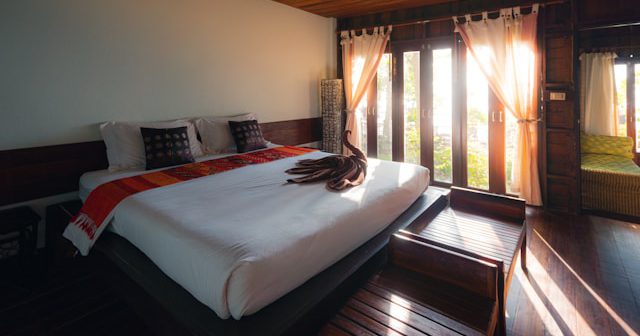Creating a comfortable sleep environment is more than just a bedtime routine; it’s about crafting a sanctuary that supports restful nights and rejuvenating mornings. Good sleep is integral to our health, affecting everything from our mood to our ability to focus. Yet, many of us overlook the impact our surroundings have on our sleep quality. In a world where the pace of life seems to accelerate daily, finding peace and tranquility in our sleep space is essential. From the firmness of your mattress to the ambiance set by lighting and sound, every detail contributes to the overall comfort and effectiveness of your sleep environment. In this blog, we will explore practical and straightforward ways to transform your bedroom into the ideal setting for a good night’s sleep, ensuring you wake up feeling refreshed and ready to tackle the day ahead.
Choose the Right Mattress
A comfortable mattress is the foundation of a restful sleep environment. It should provide the right balance of support and comfort for your body, helping to relieve pressure points and prevent tossing and turning. Consider factors like your preferred sleeping position, any existing back or joint pain, and the mattress’s material when making your choice.
But, wait. Not all mattresses are created equal, especially when it comes to firmness. What feels comfortable is highly personal and can vary based on your sleeping habits and physical needs. For those curious about firmer options known for their support, you might want to check out Tempur-Pedic mattresses. These mattresses offer a unique combination of firmness and body-conforming support that can significantly impact sleep quality. If you want to be sure they suit your budget, look up firm Tempur Pedic mattress price online to make an informed decision.
Select Comfortable Bedding
Soft, breathable bedding can significantly enhance your sleep experience by keeping you comfortable and at the right temperature throughout the night. High-quality sheets, a cozy comforter, and a comfortable duvet can transform your bed into a cloud of comfort, inviting you to relax and drift off into a peaceful sleep.
Maintain a Cool Room Temperature
The temperature of your bedroom can greatly affect how well you sleep. Most experts agree that a cool room, around 60-67 degrees Fahrenheit (15-19 degrees Celsius), helps promote better sleep by helping your body maintain its natural temperature regulation. Experiment with thermostat settings or use a fan to find the perfect temperature for your sleep haven.
Limit Light Exposure
Excessive light exposure, especially before bedtime, can interfere with your body’s natural circadian rhythms, making it harder to fall asleep. Blackout curtains, dimmer switches, or a simple sleep mask can be effective tools in reducing light exposure and signaling to your body that it’s time to wind down.
Reduce Noise Disturbances
Noise can be a significant barrier to falling and staying asleep. External sounds like traffic or internal noises from other rooms can disrupt your sleep cycle. Consider investing in a white noise machine or a set of earplugs to maintain a consistent sound environment. These tools can mask disruptive noises, providing a more controlled and serene audio backdrop conducive to sleep.
Optimize Your Pillow Configuration
The right pillow can mean the difference between waking up refreshed and starting your day with a stiff neck. Your pillow should support the natural curve of your neck and spine. Side sleepers might prefer a thicker pillow to fill the space between their head and shoulder, while back sleepers may benefit from a thinner pillow. Remember, the goal is alignment; your head shouldn’t be tilted too far in any direction.
Keep Electronics Out
The blue light emitted by screens can interfere with the production of melatonin, the hormone responsible for regulating sleep. Try to establish a rule for no screens in the bedroom at least an hour before bedtime. Instead, create a pre-sleep ritual that could include reading, gentle stretching, or meditation to help your body wind down without the stimulation from TVs, laptops, and smartphones.
Moreover, excessive exposure to blue light at night has been associated with various health issues beyond just sleep disturbances. Research suggests that chronic exposure to blue light may increase the risk of developing eye strain, digital eye fatigue, and even contribute to the development of age-related macular degeneration over time.
Create a Relaxing Pre-Sleep Routine
A consistent bedtime routine signals to your body that it’s time to sleep, easing the transition from wakefulness to sleep. This might include dimming the lights, taking a warm bath, or engaging in some light reading. The key is consistency and choosing activities that promote relaxation rather than stimulation. Over time, this routine will help cue your body to prepare for sleep, making it easier to drift off. Also, incorporating relaxation techniques such as deep breathing or meditation into your bedtime routine can further signal to your body that it’s time to unwind. By consistently practicing these calming activities before bed, you can create a powerful association between relaxation and sleep initiation.
Ensure Your Bedroom is a Sleep-Only Zone
Reserve your bedroom for sleep and intimate activities only. By keeping work, exercise, and entertainment out of your bedroom, you strengthen the mental association between your bedroom and sleep. This mental boundary can significantly improve your sleep quality by reinforcing your bedroom’s role as a place for rest. Furthermore, establishing a consistent sleep schedule and creating a calming bedtime routine can further enhance this association. Over time, these habits can help signal to your brain that it’s time to wind down and prepare for restorative sleep.
Wrapping Up…
Creating a comfortable sleep environment is an investment in your overall health and well-being. By addressing factors such as noise, light, and electronic disturbances, optimizing your sleep accessories like pillows, and establishing routines that promote relaxation, you’re setting the stage for a more restful and rejuvenating night’s sleep. Remember, small changes can have a significant impact. Start by implementing one or two of these strategies and build from there. Over time, you’ll develop a sleep environment that not only supports your physical health but also serves as a peaceful retreat from the world’s hustle and bustle. Sleep is a foundational pillar of health, and by prioritizing the comfort and tranquility of your bedroom, you’re taking an essential step toward a happier, healthier life.




